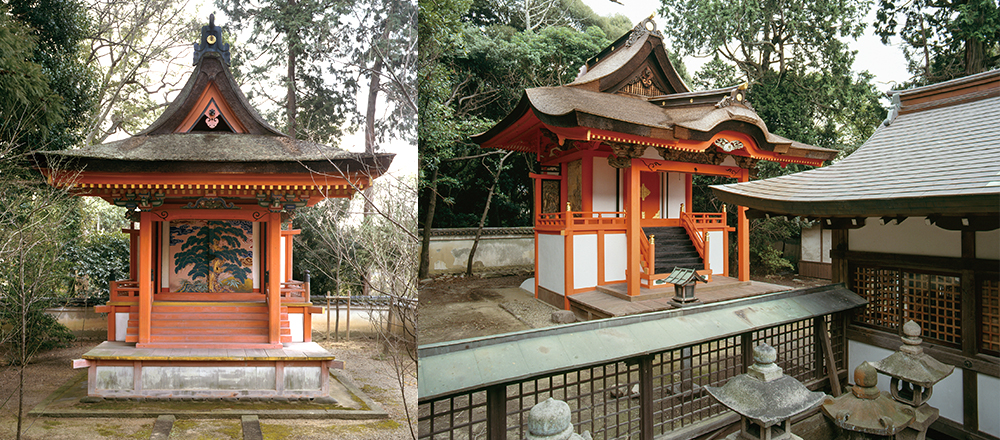Inner shrine of Hime Jinja Shrine, a branch of Hine Jinja Shrine
Also called Mizoguchi Daimyojin Shrine, people have prayed that their farm would be blessed with sufficient water here since the time of Hinenosho. The shrine was later merged into Hine Jinja Shrine.

Hime Jinja Shrine is believed to be the Mizoguchi Daimyojin Shrine depicted in the Painting of Hineno Village. The shrine was originally located in Mizonokuchi in the Higashiue area along Kashiigawa River; it was built to stand in front of the inner shrine of Hine Jinja Shrine and was called “Shimo-no-Gozen.” The Painting of Hine Daimyojin Shrine, the Fifth Shrine of the Five Shrines in the Izumi Province, which is dated 1829 and possessed by Jigen-in Temple, shows that Hime Jinja Shrine was moved to its current location near the entrance of the approach to Hine Jinja Shrine.
Although its year of construction is unknown, oral tradition indicates that it was established by Empress Jingu. The fourth volume of Sandai Jitsuroku mentions that Hime Jinja Shrine in Izumi Province was listed as a shrine on May 7, 859, and that Hime Jinja Shrine, which had had no rank, was awarded the rank of Jugoinojo (junior fifth rank, upper grade) on August 13 of the same year. It is also listed as one of the ten shrines in Hine-gun according to the fourth volume of the Engi-Shiki Shinmyocho.
Having been built in the Ikkensha Kasuga-zukuri style, the shrine features a roof covered with cypress bark shingles, pillars supporting the roof with large chamfered edges and tsunagihari (short beams) in the suihei-no-wa style. Only the shishibana (lion guardians) on the two ends of the rainbow beam of the kohai were added later in the Edo period (1603-1868), and most of the articles represent styles from the Momoyama period (1573-1603). The shrine was dismantled and repaired in 1982 to restore its brilliant colors.






